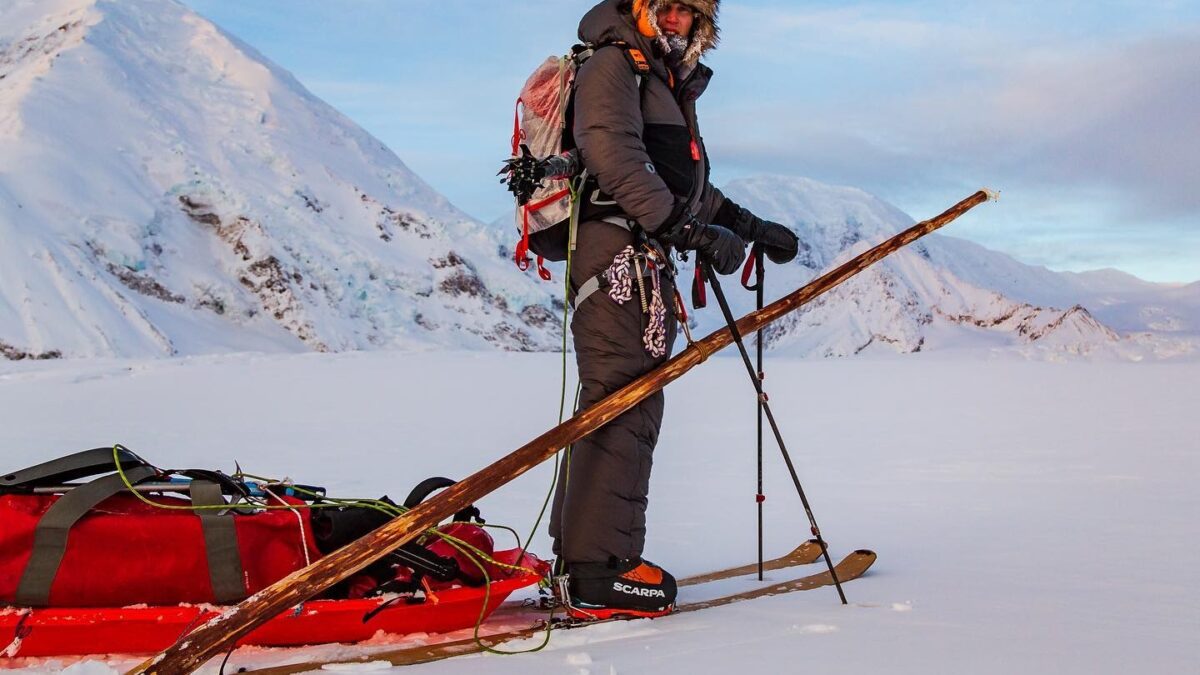Climber Using a Log to Survive Crevasse Falls
Jost Kobusch isn't the first climber to use anti-crevasse logs. He's currently on his way up Denali

German climber and experienced high-altitude mountaineer Jost Kobusch is attempting to solo Denali, North America’s highest mountain. He’s currently on his way up waiting for a weather window to ascend the Messner Couloir to the summit.
The area where he has to climb is dangerous for several reasons, but one of the biggest risks are deep crevasses hiding under the snow. When climbers team up they can rely on each other to arrest their falls in the case of falling into a crevasse. For Kobusch, he has to carry long logs that will hopefully bridge over a crevasse to prevent him from falling too far. If that happens, then he’d have to use a system to regain the surface.
There have only been four solos of Denali in winter to date: Naomi Uemura in 1984 via the West Buttress, he died on the descent; Vern Tejas in 1988 via the West Buttress, he dedicated the summit to Uemura; David Staeheli in 1989 via the West Rib; and Lonnie Dupree in 2015 via the West Buttress – he also used ant-crevasse logs.
Kobusch has climbed a number of big Himalayan peaks in the past, including Nangpai Gossum II in 2017, which he climbed solo and unsupported. The year before, he climbed Annapurna. In Alaska, he made a winter ascent of the smaller of the two summits on the Moose’s Tooth. His first solo climb was at 19 years old when he summited Mount Kenya, Africa’s highest peak alone.
Kobusch planned to attempt Denali in January 2019, but Denali National Park was closed at the time. Over the past few years, Kobush put effort into soloing Everest, but came up short due to conditions. In the past, climbers have carried bamboo poles on Denali in winter on their shoulders in case they fall into a crevasse to give the a fighting chance of surviving.



